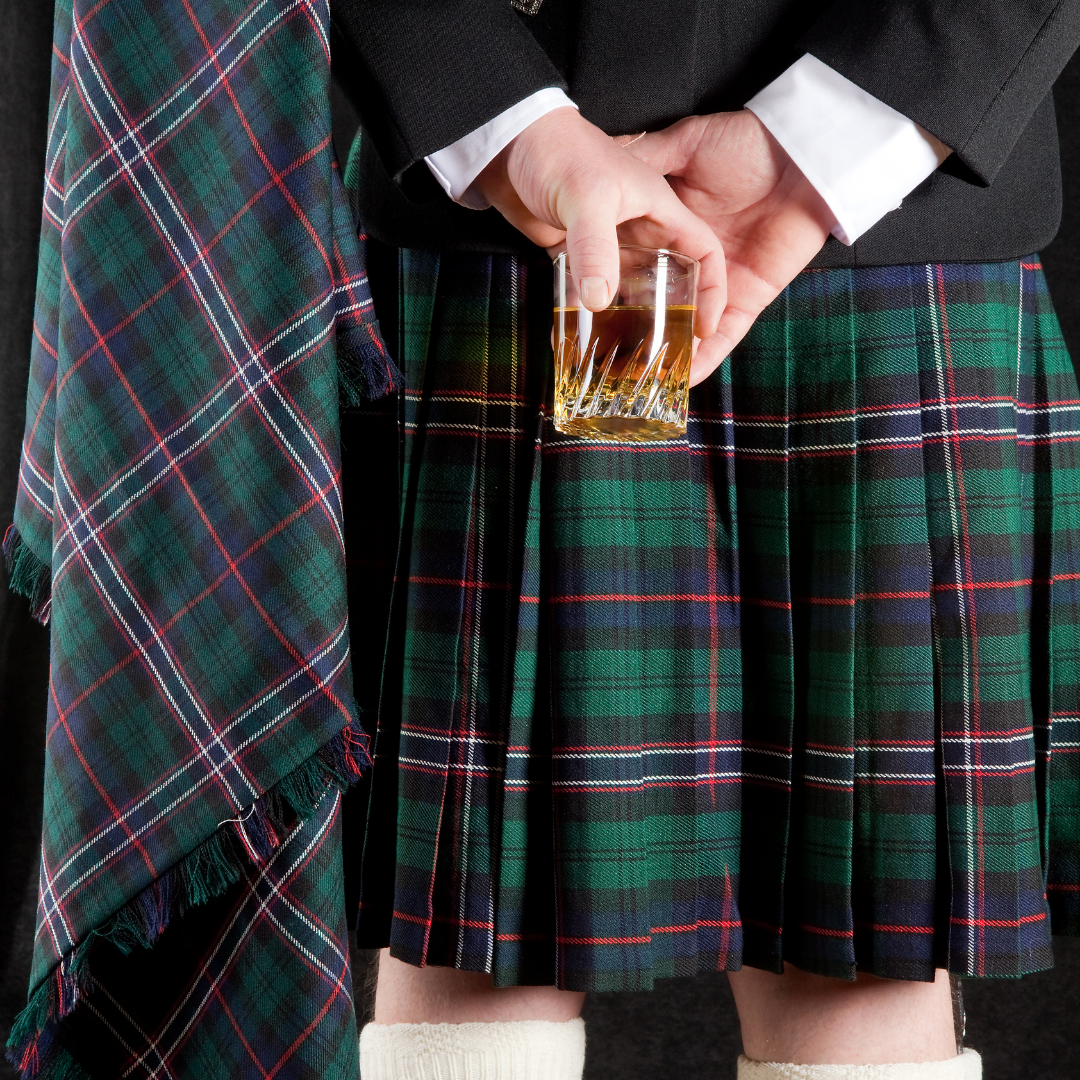Do Irish People Wear Kilts?

In Scotland, we have a long history of wearing kilts and are famous for it. They’re still massively recognised as a part of Scottish culture and are worn all over the world to symbolise Scottish pride. However, many don’t realise that kilts have a part to play in Irish history as well. Whilst the Irish history of kilts may not be as long, and gets a little confusing along the way, Irish Kilts are still an important part of Irish culture and are still worn by Irish people today.
The History of the Irish Kilt
The true origin of the Irish Kilt is slightly debated. Some believe Irishmen wore kilts throughout the middle ages, in the form of long tunics known as Lein-croichs. Historians believe these long tunics are depicted in art throughout history, from stone carvings to 16th-century battle art. Irish men would wear saffron-yellow Lein-croichs to war. This caused some confusion in the analysis of art and history as some would later mistake them for Scotsmen due to their legs being barren during battle.
Despite the Lein-croichs place in history, the first-named ‘kilt’ wasn’t introduced to Ireland until 1910. This was introduced to students of the Saint Enda’s School, founded by a nationalist who aimed to use the kilt to boost national identity and Gaelic culture.
What Do Irish Kilts Look Like?
The first Irish kilts were blue, the patron colour of Saint Patrick. These were the kilts given to children in schools and were known as a symbol of national Irish pride. However, around the time of World War One, Irish soldiers served in saffron yellow kilts to perform in Pipe bands. These uniforms that include the unique Irish kilts are still used today and are what is most popularly recognised as the Irish kilt.
However, in more modern times, Irish tartans have been created and raised in popularity. Since the late 1990s, counties in Ireland have been awarded their tartan. While these tartans are unofficial unlike Scottish clan tartans, they are hugely popular for weddings and Irish events as a way of showing pride for where you’ve come from in Ireland. These tartans are also especially popular for families who have ancestors in Ireland but have since immigrated to places like America and Canada.
Some of the most popular Irish tartans include Dublin County, Cork County and Kerry County. At the Scotland Kilt Company, we offer several tartans in our men's 8-yard kilt Irish county 100% wool medium weight tartan, which is traditionally hand-stitched. To view our online store, click here.

How Should You Accessorise An Irish Kilt?
The styling of an Irish kilt is not that different from a Scottish kilt, with a few subtle changes.
Every kilt should be paired with a sporran, and these are widely the same as the ones worn by Scotsmen. A leather sporran will do the job perfectly; however a lot of Sporrans have Scottish thistles or symbolism on them, so you might want to opt for an Irish design like a shamrock if you want to be specific with the details.
Scottish kilt wearers often pin their family crest to their kilt, which of course in Ireland tartan is not connected to clans or families, so this is much less traditional. Some decide to leave their kilts without pins or opt for a pin with Irish or Celtic symbolism like the shamrock.
The traditionally correct jacket to wear with an Irish kilt is called a Brain Boru. This is a double-breasted jacket with sweeping shawl lapels, often made with satin. This should be paired with a black bow tie and is expected to be worn at formal Irish occasions.
Final Thoughts
While an Irish kilt may get confused with a Scottish version, their histories are vastly different and represent completely different meanings. If you’re looking for a way to include some Irish pride or representation from your home county in a wedding or overall formal event, Irish kilts are a great way to do it. The importance of choosing an Irish kilt is in the tartan (if at all) you want to include, and the details of the accessories.

 Check out our Yotpo Reviews
Check out our Yotpo Reviews